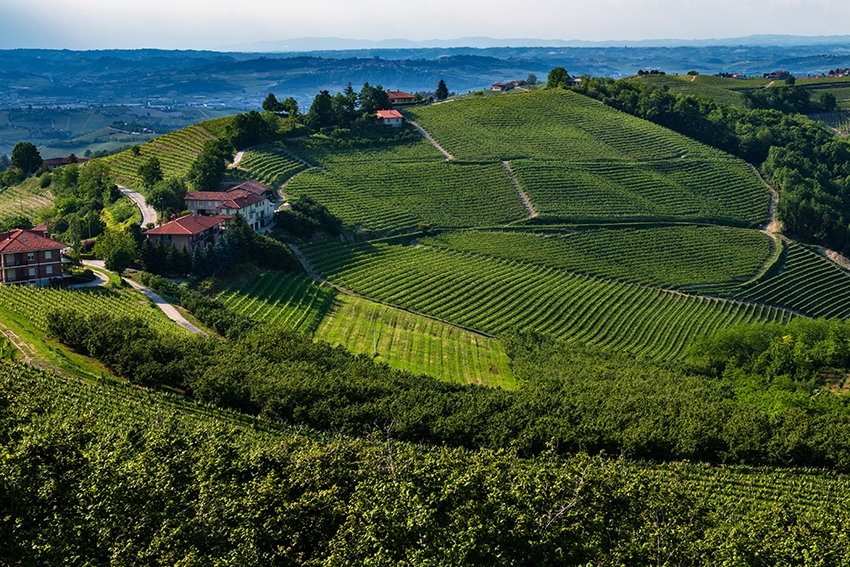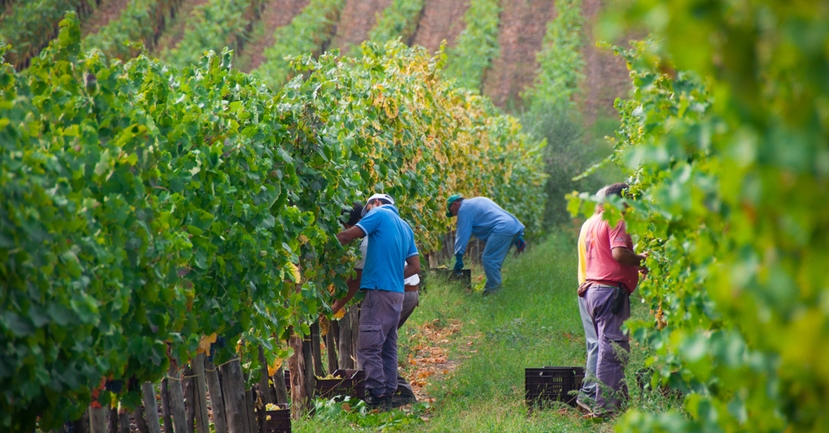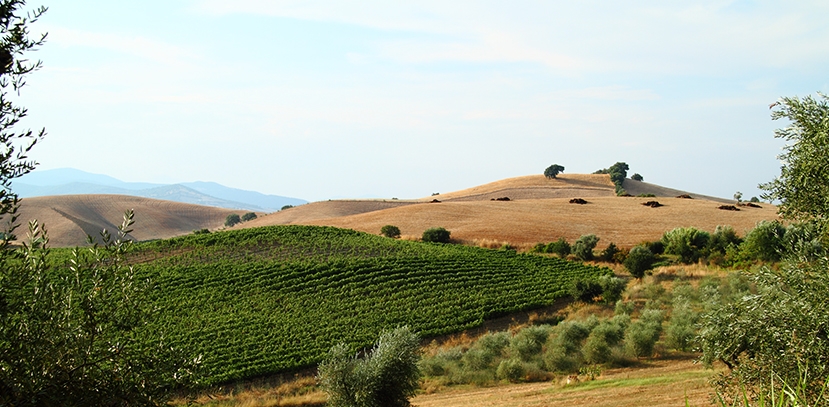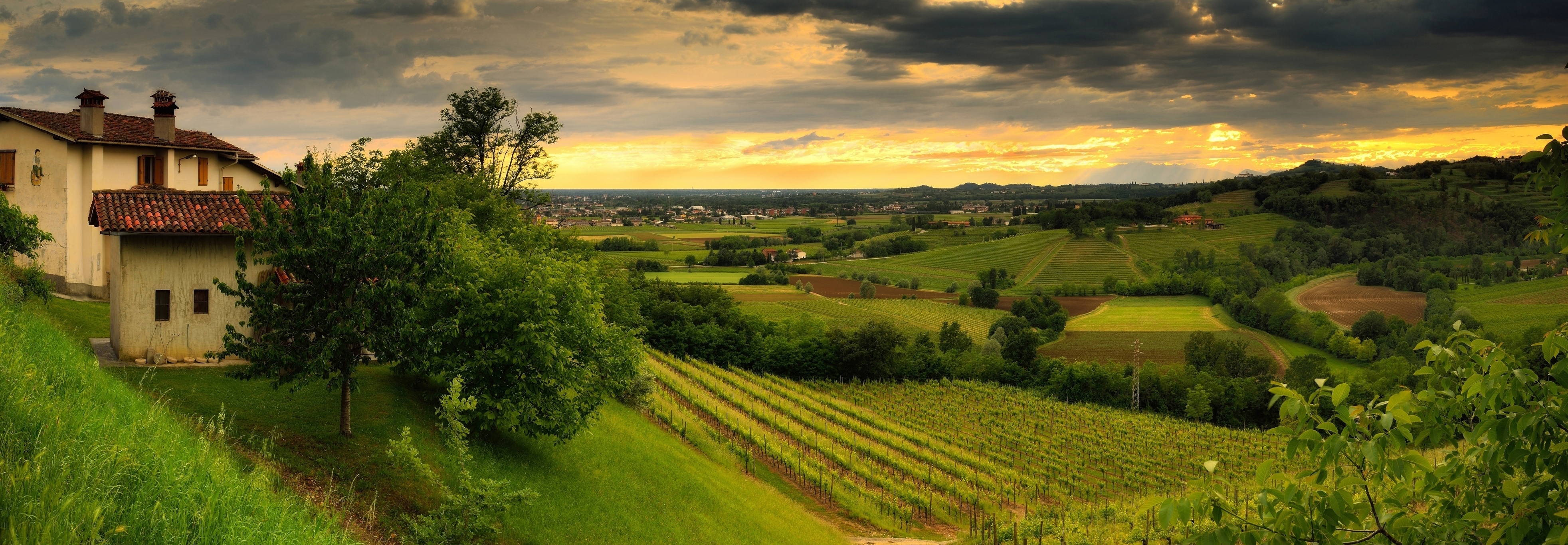BLOG
Trezzo Tinella: Roman foundations, cool slopes and budding prospects
Joshua Dunning
Regional Spotlight

The Romans arrived in Piedmont during the 2nd century BC, establishing colonies in Eporedia, Derthona, and Augusta Taurinorum (Ivrea, Tortona, and Turin, respectively). These territories were strategically important—their locality to the Alps helped the Romans control northerly invaders. As was customary, the Romans settled and built roads, aqueducts, amphitheatres, bridges, and established towns and cities. They also planted vines but were not the first to do so here...
The Celtic-Ligurians had 'practised' viticulture in Piedmont as early as the sixth century BC. At a time, via Magistra Langarum ('main road to Langhe')—connecting Alba with Cortemillia and the villages of the Riviera—was the largest existing Roman road. Various Roman cities occupied tactical positions along its route, including Trezzo Tinella in Alta Langa, which was once a vast city and marked a critical junction along via Magistra Langarum.
Trezzo Tinella derives its name from the minor stream Tinella, which flows from and through the village. In 973, chronicles show that Emperor Otto donated the village to the church of Asti. It later belonged to the Marquises of Busca, then to the lords of Revello and subsequently to the Laurenti d'Asti. Following the marriage of the last descendant of the family, Violante, with Andrea Marquis of Busca, Trezzo returned under the lordship of this family. Alas, until at least 1800, frequent conflict scarred Piedmont. During the Middle Ages, castles were erected in important villages to ward off intruders, including a tower in Trezzo Tinella, which stood until 1968 and collapsed the following year completely. Various other monuments and remains allude to Trezzo having once been home to a large population, including the Parish Church of Sant'AntonioAbate, the Monument to the Donna di Langa, the Church of Battuti, a nearby necropolis, and scattered ruins of homes and farmhouses.

View of Trezzo Tinella, courtesy of Welcome Langhe Roero
The commune was well populated until and during World War II—in 1936, there were 1007 inhabitants. Storying the struggles of local partisans, Beppe Fenoglio set a portion of his posthumous work, 'Private Matter', in Trezzo Tinella. More recently, sculptor Marco Gallo installed a bronze artwork ("Woman of the Langa") in Piansarin, as a tribute to the contribution of local wartime women. Sadly, the Italian diaspora, compounded by locals fleeing small villages to growing commercial centres (namely Alba, Turin and Milan) amid Italy's post-war 'Economic Miracle', disproportionately affected smaller villages like Trezzo. By 1951 the commune's population had declined 23% from 1936, 50% by 1971 and 65% by 2001 to 356 inhabitants. Trezzo also had its own school and nursery until 1986. Local children—of which there are few— now attend nearby schools instead.
Winegrowing history
Grapes have been cultivated in Trezzo Tinella since at least Roman times. Native white varieties dominated early plantings, including Moscato Bianco, Arneis, Cortese, Favorita, and Erbaluce. Moscato Bianco was perhaps most prominent; grown in Piedmont since the 1300s, Moscato Bianco was particularly popular in the 15th and 16th centuries, when tariffs and laws prohibited the import of foreign wine to encourage domestic production. Important local producers also commonly document Moscato Bianco as prominent in their origin stories. Further, Barolo stalwart Oddero still farms Moscato Bianco in Trezzo Tinella, a vineyard of obvious importance. Some red varieties were probably grown too, though most historical mentions of quality red production centre around Barolo and Barbaresco and in townships closer to Alba.
Author Rod Phillips has written that four factors were crucial to expanding wine production and viticulture in the Mediterranean between 5000 BC and 500 AD. These same factors continued to influence successful production in various European countries. Until the early-to-mid 1900s, Italians commonly lacked specific knowledge of viticulture and viniculture; wine was not yet a profitable agricultural product or commodity for trade, and only a very small market existed for quality Italian wine. Emigration from Trezzo Tinella compounded these unfavourable conditions, as did its marginal climate and the successes of its neighbours.

View from the Mustela vineyards, courtesy of Azienda Agricola Mustela
Subsequently, despite impressive successes nearby, only a handful of wineries were founded in Trezzo Tinella, and critical acclaim missed the commune almost entirely, precluding it from DOC/DOCG consideration. Consequently, its production fell into several other delimitations (Langhe DOC, Moscato d'Asti, Barbera d'Alba etc.), none bearing its own name, sadly. Even when Moscato grew popular around the new millennium, local wineries failed to establish strong brand identities—perhaps because many had already begun focussing on planting and vinifying popular local and international white varieties. Nevertheless, some 'foreign' producers did express interest in Trezzo's landscape as early as 1988, including Braida, who planted Riesling that same year, and Pio Cesare, who later planted Chardonnay and Sauvignon. Importantly, a handful of local vignerons did begin bottling their own wines, including Mustela, Il Bosseto and Cerrino.
Terroir, climate, viticulture, and wine
Bordering Treiso, Barbaresco, Trezzo Tinella spans 10 square kilometres (larger than Barbaresco and Barolo) and varies in altitude (vineyard plantings are comparatively infrequent) from 304 to 712 metres above sea level. Notably, Trezzo's lowest altitude exceeds that of nearby Barolo and Barbaresco's averages (213 and 274 meters, respectively). The result is a marginally cooler climate which warms later and cools earlier than its neighbours each day—these cooler temperature windows are exacerbated at altitude. Today's warming climate makes these slopes a welcome escape from punishing temperatures elsewhere. Warming notwithstanding, the commune remains cooler and best suited to early ripening varieties and white wine production.
In the past, Trezzo might well have been too cool to sufficiently ripen wine grapes, at least what was planted and where. Fortunately, contemporary viticulture is much more capable than its rudimentary antecedent. Today, vignerons carefully deliberate clones, site suitability, row orientation, pruning strategies, soil management, and more, exploiting varying viniculture techniques depending on desired results.
Present-day plantings are varied, including Moscato Bianco (less than before), Barbera, Dolcetto, Nebbiolo, Chardonnay, Pinot Noir, Sauvignon, Nascetta, Favorita, and even Riesling. Vineyards are less frequent than elsewhere in Langhe, interspersing hazelnut trees, wheat fields, corn, meadows, and woods still used for firewood. Expositions and altitudes vary, and vines are suitably planted; south exposed sites are mainly dedicated to Nebbiolo, Barbera, and Dolcetto; higher altitudes are planted chiefly to sparkling production and still whites. At Il Bosseto, the brothers are deeply committed to agri-environment protocol, restricting inputs and intervening more discriminately. For example, botrytis can be troublesome in Trezzo Tinella; the brothers treat this now with stripping and balanced fertilization, crucial to a growing local commitment to considerate agriculture.

Close-up of a vineyard, courtesy of Azienda Agricola Mustela
The commune resides within various DOC (Langhe DOC, Dolcetto d'Alba, Barbera d'Alba) delimitations and one DOCG (Moscato d'Asti) but has none belonging to it alone. Wines are made still, sparkling and sweet, though sweet wines are much less common than they might once have been. Still wine quality has increased most notably in recent decades, particularly nebbiolo and chardonnay, which have benefited from improved viniculture. The brothers at Il Bosseto credit' modern techniques (derived from current knowledge) but with an eye to tradition' as crucial to their work. At Cerrino, Simona has established working relationships with successful Piedmontese producers, sharing knowledge and practices. This outward perspective and enthusiasm will continue to benefit the wines.
Budding prospects
Rising land prices in Piedmont's core municipalities, a warming climate, enhanced viniculture, and growing interest in international and autochthonous white varieties have stoked new plantings and construction in Trezzo Tinella. Most notably, Barbaresco pioneer and luminary Angelo Gaja, with his children Gaia, Giovanni, and Rossana, recently began planting vineyards and constructing a winery near Cascina Langa, intending to grow and vinify early ripening white varieties. In 2020, artisan winemaker Roberto Garbarino also expanded his plantings in Trezzo Tinella, planting 4.5ha of Chardonnay and Pinot Noir at 500m asl for producing Alta Langa sparkling. Various other producers have also expressed similar interests.
Of course, progress ought not to be at the expense of the commune's landscape, as is playing out in Barolo and Barbaresco, where tourism and growth are contentious topics. Nevertheless, with a favourable terroir and climate, farmed by a budding generation of knowledgeable artisanal growers selling wine into a profitable, global market exhibiting a strong preference for Piedmontese wines and compelling backstories; the stage is indeed set for a star to be born in Trezzo Tinella, as it was for strongminded vigneron in nearby Colli Tortonesi several decades earlier. I, for one, am excited to see what might transpire here in the years to come, should the right growers make it so.



